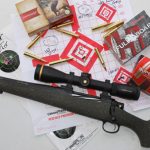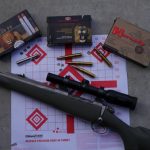Some of the cartridges developed in recent times are great—but many are simply redundant.
Photo above: A very mature Georgia whitetail, taken with the Springfield Waypoint in 6.5mm PRC. The 6.5mm PRC is ballistically similar to the old .264 Winchester Magnum, but in most rifles with equal barrels is likely to be more accurate.
As we grow older, it’s almost axiomatic that we become more like our parents, whether we wish to or not. When I was a young writer, it seemed that the older writers were all curmudgeons (some lovable, some not!), while the younger crew quickly embraced the new whiz-bangs. Jack O’Connor was among the more outspoken in pooh-poohing brave new cartridges–especially the magnums that grew in popularity in his later years. He remained quite happy with his .270s, and the 7×57 and .30-06.
Still, in a 1960s letter to Bob Chatfield-Taylor (of the .416 Taylor), O’Connor listed the rifles he currently owned–including 7mm Remington Magnum and .300 Weatherby Magnum! Younger writers have probably always been more lavish in their praise of new cartridges than old-timers. It’s probably natural that younger people more readily embrace new stuff, while older folks are more skeptical. Also, of course, younger writers are hungrier, and more desperate for something to write about.
In a business with no mandatory retirement, gunwriters continue until infirmity dictates. So, it wasn’t so long ago that I was a younger writer, and I relished a new cartridge that gave me something to write about. In the quarter-century from about 1980 I was involved in most new cartridge introductions. Through the 1980s and most of the 1990s it was a trickle, and many of the introductions were exciting, such as the .35 Whelen (1988); the resurgence of the .416 (both the .416 Remington and .416 Weatherby Magnums in 1989); and the .260 Remington in 1997.
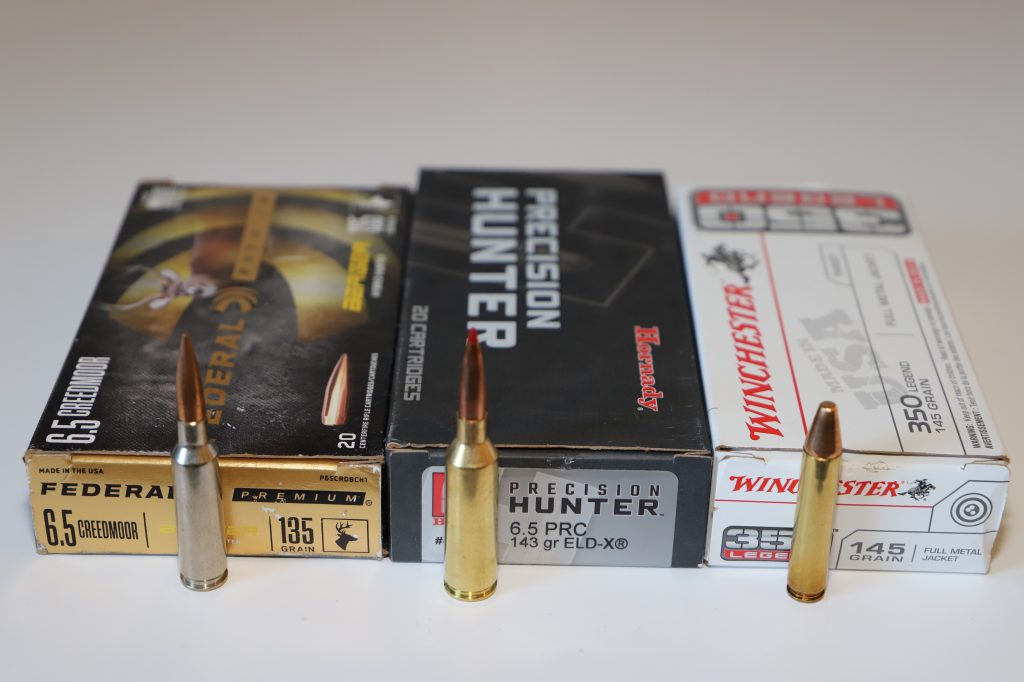
Then, in just a few years from 1999, came an astounding spate of short, long, extra-short, and fat-cased unbelted magnums. There were full-length Remington Ultra Magnums, Winchester Short Magnums, Short-Action Remington Ultra Magnums, Winchester Super Short Magnums and, a couple years later, the Ruger Compact Magnums. Among them, I make it fifteen fat-cased unbelted factory cartridges of various case lengths, all carrying the “magnum” moniker. Boy, did we have a lot to write about!
Cartridge design today is well advanced; it’s unlikely for engineers to make genuine mistakes in performance characteristics. And, since most serious shooters have access to reliable chronographs, there isn’t much blue sky in published velocities. So, factory cartridges pretty much do what they’re supposed to. In terms of what they were designed to offer, all of these cartridges are “good.”
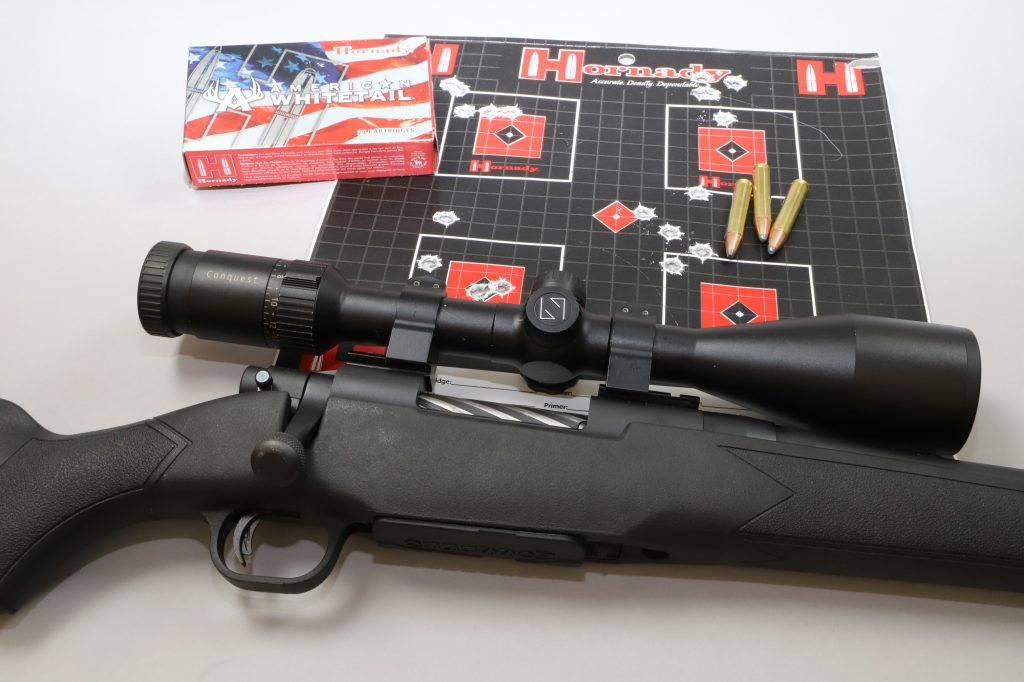
However, performance and marketing success don’t always go hand in hand. Shooters have preferences in bullet diameters, velocity parameters, and actions (which require cartridges of finite dimensions). And we all have different recoil tolerances. So not all of us were gonna like all fifteen of these new unbelted magnums. Also, the obvious: None of us could possibly have a need for all of them.
In the early 2000s the procession of new cartridges seemed endless. The American hunting and shooting markets are not unlimited. It seemed unlikely that we could absorb all of these brave new cartridges. Some would prevail, others probably not. I’m pretty sure I predicted this. But, at the time, my job was to write about them, and tell folks whether they did what they were supposed to do (they all did). It was not my job to predict which would be winners and which would be losers. Inevitably, there were both, and several of those unbelted magnums are already gone, with some of the shortest production runs in American cartridge history.

Since then, the flood of new factory cartridges has slowed to a trickle. Except for the occasional flurry, that’s the way it has been for a century, with very sporadic new cartridge introductions. That’s probably the way it should be. Between design, tooling, production, and marketing, bringing out a new cartridge is frightfully expensive. Although there were some home runs in that unbelted magnum blizzard at the turn of the millennium, I can’t imagine the cost.
These days, without a constant flood of new cartridges to write about, guys like me must try to be a bit more creative (or retrospective). I don’t want to be curmudgeonly (like the older gunwriters I grew up with!), but I tend to think we have about all the centerfire cartridges we really need, and there’s a lot of redundancy in performance. Hmm, maybe I am becoming a curmudgeon! Unlike my younger days, in recent years I’ve been slower to embrace new cartridges among today’s slow trickle. And, as a writer, I no longer bombard manufacturers with “me first!” pleas.
In this past year, most uncharacteristically, I have spent a bit of time hunting with several fairly new cartridges, including the 6.5mm Creedmoor, 6.5mm PRC, and .350 Legend. The 6.5mm Creedmoor is certainly not “new,” but its rise to stardom has been recent.
I have been publicly (and curmudgeonly) outspoken in my lack of enthusiasm for the 6.5mm Creedmoor. I will not reverse myself. It’s a wonderful example of performance redundancy: Ballistically, it is almost identical to the .260 Remington, and similar to the old 6.5x55mm Swedish Mauser. That is not damning with faint praise: Both the .260 and 6.5×55 are great little cartridges. However, especially in these days of pandemic shortages and political uncertainty, there is much to be said for popular cartridges (which translates to widespread availability).

I do own a 6.5mm Creedmoor. Great little cartridge, and it offers the advantage of a short, efficient case so, in short actions, it does well with longer, heavier bullets. Because of this, and with the inherent burning efficiency of shorter (and thus relatively fatter) cases, it is probably a better long-range target cartridge than the .260 Remington or the older European 6.5mms. At medium range it is not a better hunting cartridge, and (at least in my opinion) none of these milder 6.5mms carry enough energy to reliably take big game at long ranges.
Depending on size of game and one’s personal definition of “long range,” the faster 6.5mms definitely do. As we know, there is now a spate of them. In part, this is because the Creedmoor’s popularity awakened new interest in the 6.5mm, and bullet selection has greatly expanded. I haven’t used all the new 6.5mms and I probably won’t. But I’ve used several, including the fastest, the 6.5mm Weatherby Magnum and 26 Nosler. This fall, I’ve used both the 6.5mm PRC and the proprietary 6.5mm SST (Sherman Short Tactical). Both (if I can be forgiven a curmudgeonly comment), are ballistically similar to the old .264 Winchester Magnum, introduced in 1958 and hovering on obsolescence. Honest, I had a passing thought that I should rechamber my .264 to a newer case design. Fortunately, the impulse passed! My .264, with a great barrel, is very accurate. And, built on a rare left-hand Santa Barbara Mauser action, it feeds perfectly. It would probably shoot as well with a modern case design, but feeding could be an issue, and not worth the risk.
Unless you’re a serious rifle crank, non-standard (wildcat or proprietary) cartridges are problematic, but the 6.5mm PRC is interesting, with a short, efficient unbelted case, intended for use with today’s long, aerodynamic 6.5mm bullets. This fall, I’m using it in a Springfield Waypoint, a super-modern “tactically inspired” rifle that shoots great. Performance is, well, no different from what I get from the archaic .264, roundabout 3,000 fps with a more-or-less 140-grain bullet. I figure this to be the 6.5mm “sweet spot,” much better downrange performance than is possible with the Creedmoor and its ilk, but not as much muzzle blast and recoil, and not as finicky as the fastest 6.5mms.
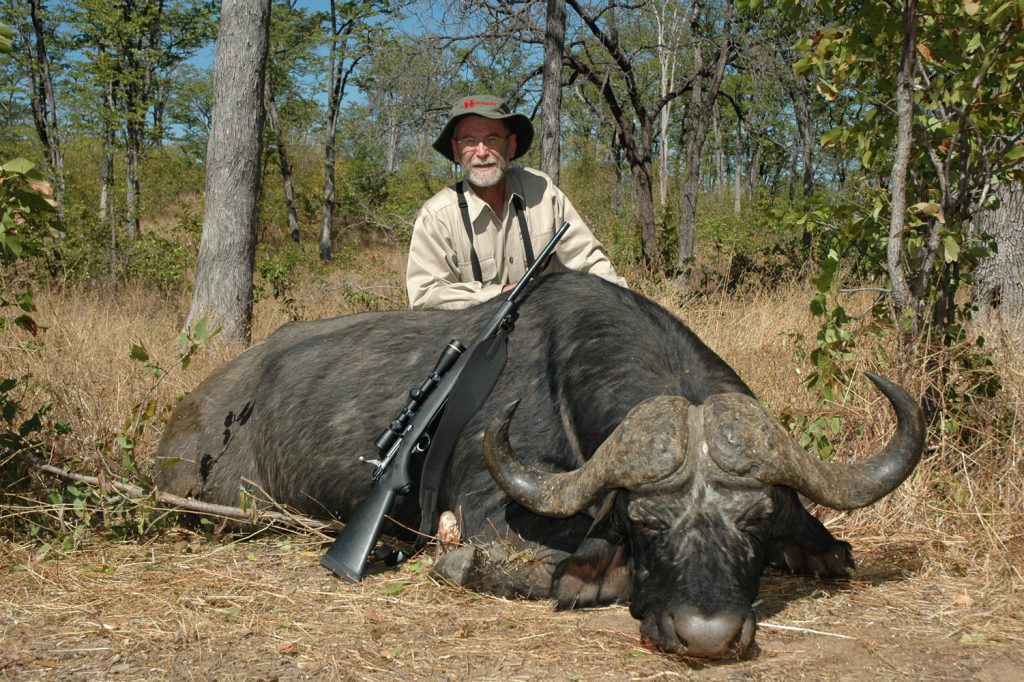
Winchester’s .350 Legend is a classic “purpose-driven” cartridge, intended for use in the (now five) important whitetail states that allow “straight-wall” (and thus relatively short-range) centerfire rifle cartridges in lieu of traditional shotguns with slugs (and muzzleloaders). It is sized to be adaptable to AR platforms, and also other actions. The many American .35-caliber rifle cartridges have traditionally used .358-inch bullets. The Legend uses slightly smaller 9mm bullets (which were standard in European rifle as well as handgun cartridges). This allows manufacturing efficiency, and also lower cost practice ammunition using 9mm pistol bullets.
Larry and Erin Tremaine brought a .350 Legend AR to our Kansas farm last year and took multiple does with it. I haven’t personally used the Legend for deer, but I’m applying in Iowa (which now allows straight-wall cartridges), so I have a Mossberg Patriot in .350 Legend. Although not as fast as the .358 Winchester, it’s faster than the famous old .35 Remington, neither of which would be allowed under straight-wall-cartridge rules. So, I have a Mossberg Patriot in .350 Legend, and I’ve used it to take several wild hogs, very effective.
There are many brave new cartridges I haven’t used, and I certainly won’t get around to all of them. But I’m still willing to try new stuff–provided it makes sense.






